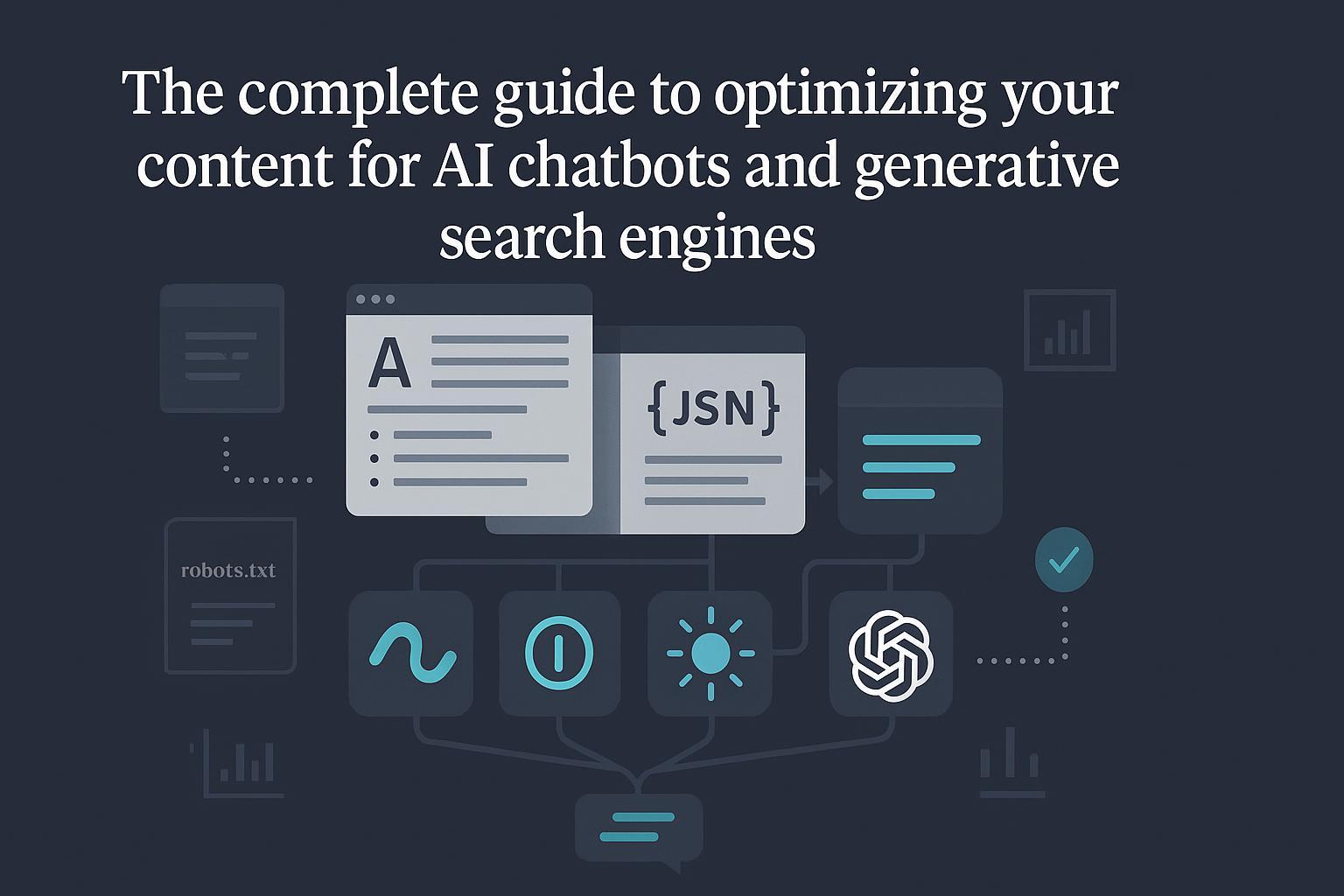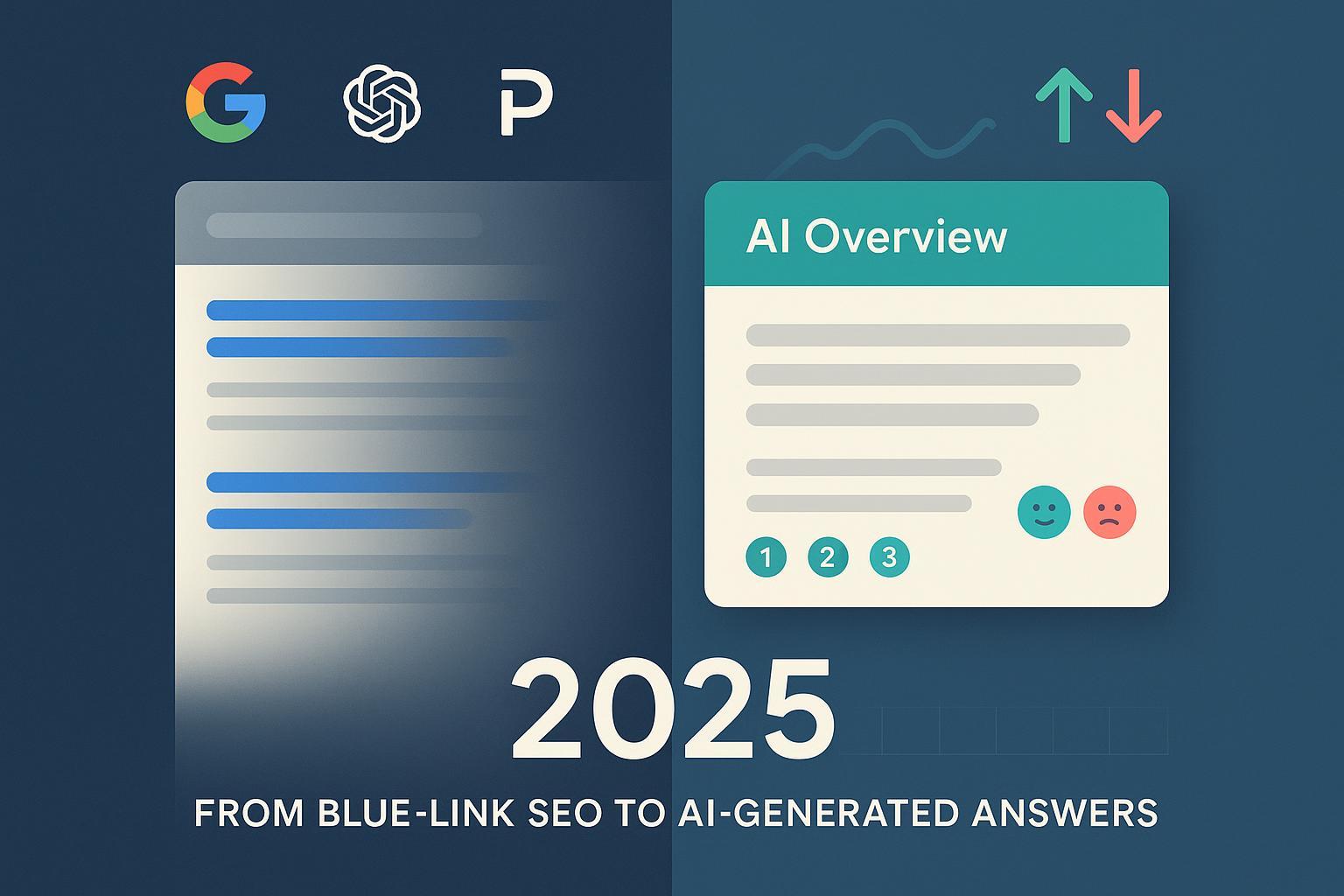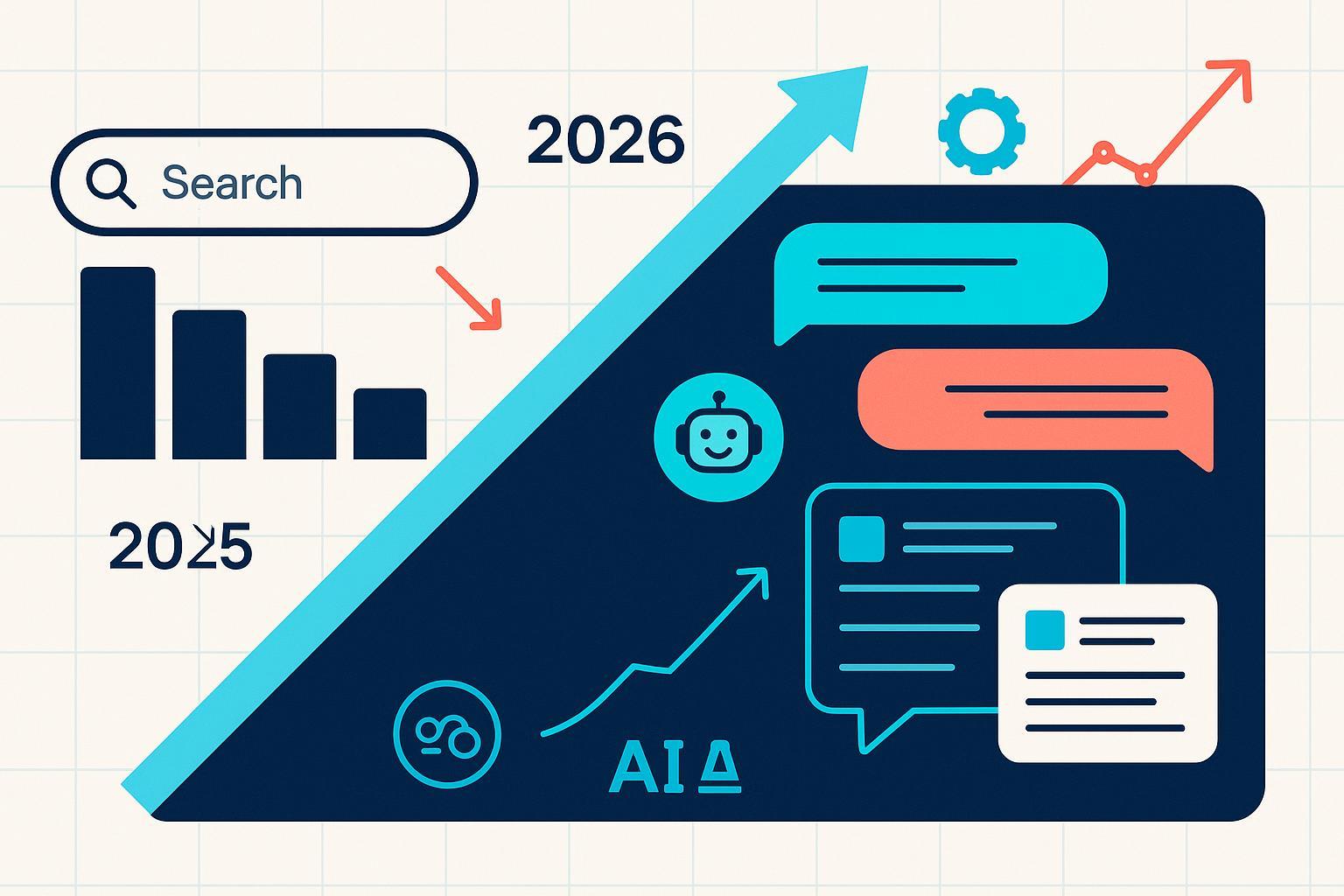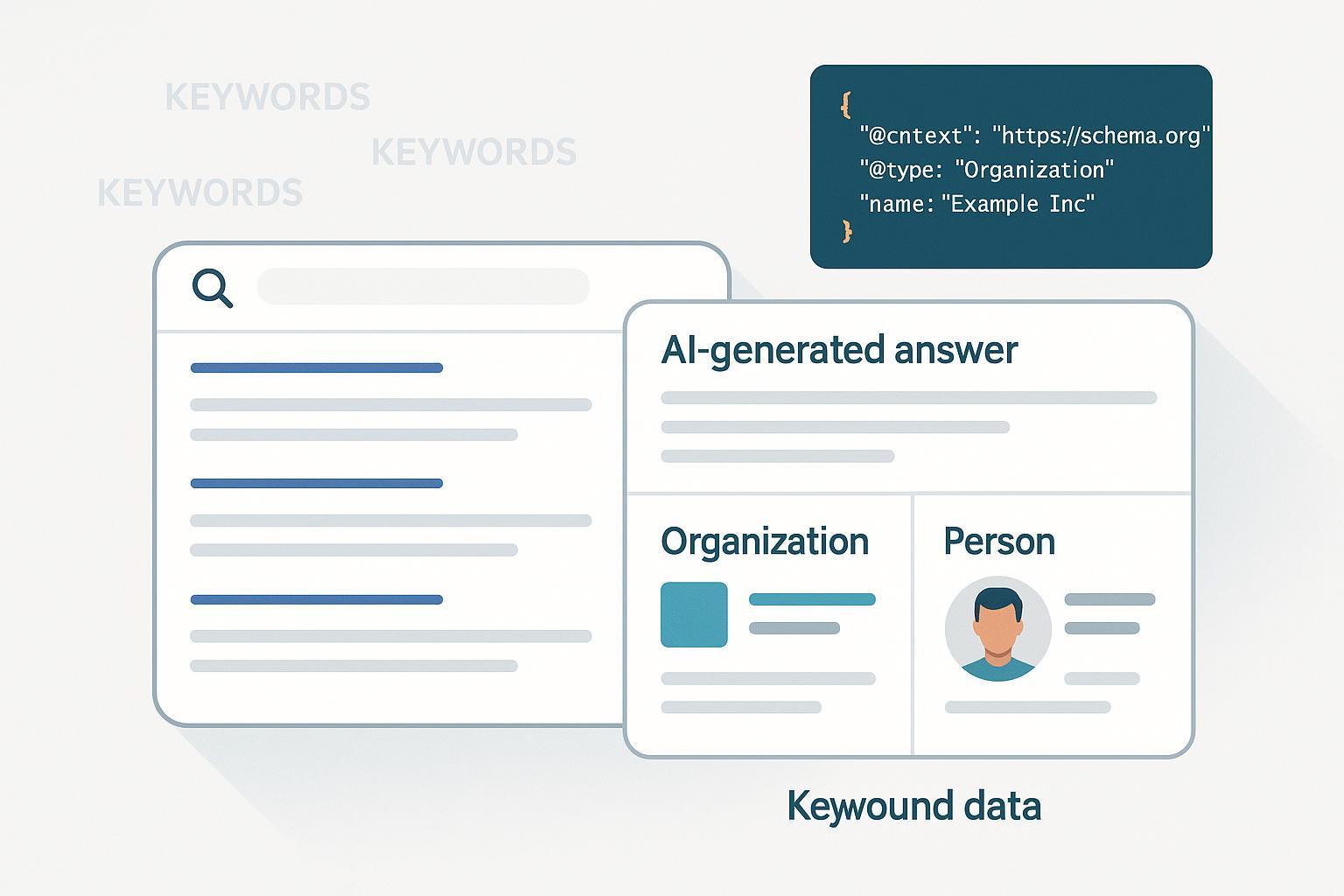Ultimate Guide: Optimizing Content for AI Chatbots & Generative Search
Unlock actionable strategies to optimize content for AI chatbots and generative search engines. Comprehensive, platform-specific, and expert-driven—read now.


If you’ve felt the ground shift from “ten blue links” to direct, synthesized answers, you’re not imagining it. Generative engines—Google’s AI Overviews, Bing Copilot, Perplexity, and chatbot experiences like ChatGPT with browsing—now explain, compare, and recommend using content they find across the open web. This guide distills how to structure, publish, and maintain content so these engines can find, understand, and confidently cite your work.
Two quick notes before we dive in:
- This is an evergreen, principles-first playbook. Platform behaviors evolve fast, so treat any platform-specific advice as current guidance that should be reviewed periodically.
- We’ll use the term “AIO/GEO” (AI/Generative Engine Optimization) to describe the practices that make your content easy for AI engines to parse and cite. Think of it as SEO’s cousin—sharing fundamentals but tuned for answer synthesis.
What “optimization for AI chatbots and generative search” really means
You’re not gaming an algorithm. You’re making your expertise extractable. In practice, that means:
- Your pages answer the core question clearly and up front, then provide depth and proof.
- Your content is technically accessible to crawlers and renders predictably.
- You express ideas in self-contained chunks (definitions, steps, criteria, pros/cons) that models can lift into answers.
- You show authority signals—authorship, citations, transparent updates—that increase the likelihood of being trusted and cited.
Google emphasizes that there is no special markup required to appear in AI Overviews; the winning pattern is unique, helpful, verifiable content with clear presentation (Google Developers, 2025). See the guidance in Google’s “Succeeding in AI search” (2025).
Fundamentals that travel across engines
In my experience, four pillars consistently move the needle across AI engines:
- Start each page or section with a crisp answer in 2–4 sentences.
- Follow with skimmable details: steps, bullets, tables, and definitions.
- Use question-led subheadings (H2/H3) that mirror how people ask.
- Semantic clarity and context
- Define jargon the first time it appears, especially acronyms.
- Use consistent terminology for core entities (products, industries, metrics).
- Add internal links to prerequisite concepts to help engines (and humans) build context. For a deeper walkthrough of formats and structure, see this guide on structuring content for AI extraction.
- Technical accessibility
- Let compliant crawlers in; avoid hiding critical content behind client-side rendering.
- Provide sitemaps, clean canonicals, and stable URLs.
- Keep important content in the HTML. Test rendering for parity.
- Use specific sources for claims and stats; cite them inline with descriptive anchors.
- Show authorship, credentials, and edit history where relevant.
- Add original perspectives (methods, benchmarks, examples) that engines can’t find everywhere else.
Technical access and control: Crawling, robots.txt, rendering
You can’t be cited if you’re not reliably crawled and understood.
Robots.txt: Allow what should be discoverable; control what shouldn’t
Place robots.txt at your domain root. Remember the longest-match rule and that Allow can override broader Disallow. See the primer in Google’s robots.txt introduction.
Pragmatic examples you can adapt:
Allow Googlebot and Bingbot while keeping sensitive directories off-limits:
User-agent: Googlebot
Disallow: /admin/
Allow: /
User-agent: Bingbot
Disallow: /admin/
Allow: /
Sitemap: https://www.example.com/sitemap.xml
Allow PerplexityBot broadly (recommended if you want inclusion), but monitor logs:
User-agent: PerplexityBot
Allow: /
Sitemap: https://www.example.com/sitemap.xml
Control GPTBot access explicitly (commonly accepted configuration):
User-agent: GPTBot
Disallow: /
Notes and caveats you should be aware of:
- Perplexity’s official crawler token is documented, and it states that PerplexityBot respects robots.txt. See Perplexity crawler docs.
- In August 2025, Cloudflare alleged that Perplexity used undeclared crawlers that evaded robots.txt. The dispute remains unsettled; proceed with monitoring, rate limits, and firewall rules if needed. Read the details in the Cloudflare analysis (2025).
- The GPTBot token is widely referenced by reputable industry publications; if you restrict it, use server-side controls in addition to robots.txt where necessary.
Rendering and JavaScript
Even when engines can execute JavaScript, you’ll get more reliable inclusion if critical content is present at initial load.
- Prefer SSR/SSG for primary content.
- Avoid blocking JS/CSS in robots.txt.
- Keep titles, headings, canonicals, and meta tags consistent between server and client.
- Test with your search console tools and render as Googlebot/Bingbot to confirm parity.
Sitemaps, canonicals, and hygiene
- Maintain XML sitemaps for primary content collections; list canonical URLs only.
- Keep your canonical tags stable. Avoid conflicting canonicals, meta robots, or hreflang setups.
- Eliminate soft-404s and thin duplicates that can dilute signals to your best pages.
Content architecture that AI can lift into answers
Your goal is to package expertise into chunks that are easy to quote.
Patterns that work
- Definition boxes: “What is X?” with a 1–2 sentence definition and a short example.
- Step-by-step procedures: Numbered lists with imperative verbs and expected outcomes.
- Comparison tables: Clearly labeled rows/columns; avoid jargon in headers.
- Q&A blocks: Discrete questions under H2/H3 with concise answers and a link to detail.
Schema: Helpful hints for machines (not magic keys)
Structured data can clarify what a page is about, but it’s not required for AI Overviews. Use it to reinforce meaning and eligibility for other search features. See Google’s structured data introduction.
Example: Article JSON-LD skeleton you can extend.
{
"@context": "https://schema.org",
"@type": "Article",
"headline": "The complete guide to optimizing your content for AI chatbots and generative search engines",
"author": {
"@type": "Person",
"name": "Your Name"
},
"datePublished": "2025-10-09",
"dateModified": "2025-10-09",
"mainEntityOfPage": {
"@type": "WebPage",
"@id": "https://www.example.com/ai-generative-optimization-guide"
},
"publisher": {
"@type": "Organization",
"name": "Your Company"
},
"image": [
"https://www.example.com/images/ai-optimization-guide-cover.jpg"
]
}
Important context for FAQ/HowTo content: Google limited and then deprecated certain rich result displays for HowTo and limited FAQ display to specific authoritative sites in 2023. The markup can still help machines understand context, but don’t expect the old visual treatments. See the announcement in Google’s HowTo/FAQ changes (2023).
If you’re architecting a library of highly extractable resources, this step-by-step companion on semantic SEO and topical authority explains how to build depth that engines recognize across an entire topic cluster.
Platform playbooks: What’s the same and what’s different
Google AI Overviews
- What matters most: helpfulness, uniqueness, clarity, and verifiability. There’s no special markup for AI Overviews. Organize answers clearly and cite authoritative sources within your content so that your page itself is well-supported.
- Practical moves: lead with an answer; support with sources; keep data points explicit (units, years, geographies). Avoid thin commodity content.
- Reference: Google’s current perspective in “Succeeding in AI search” (2025).
- For applied tactics that pair with classic SEO, this breakdown of Google AI mode best practices provides scenario-driven tips you can adapt.
Bing Copilot (AI answers)
- What Bing emphasizes: crawlability, aligned metadata (titles/descriptions/headings), semantically clear, self-contained ideas, and solid internal linking.
- Practical moves: audit titles/descriptions for clarity and consistency; structure sections so each answers a discrete question; submit sitemaps and monitor in Bing Webmaster Tools.
- References: Microsoft outlines optimization focus areas in the Microsoft Advertising blog (Oct 2025) and provides guidance on generating answers from public websites in Microsoft Learn (Copilot Studio). If you manage a large site, the Bing Webmaster Tools Copilot update (March 2025) is worth reviewing to streamline checks.
Perplexity
- How it works: Perplexity tends to include citations directly in answers and favors clean, authoritative sources with clear titles and sections.
- Practical moves: allow PerplexityBot; keep answers upfront; use descriptive headings; cite your sources so your content is self-evidently credible.
- References: Crawler behavior in Perplexity’s bot documentation; ongoing Cloudflare dispute summarized in the Cloudflare blog analysis (Aug 2025). Monitor logs and tune as your risk tolerance dictates.
ChatGPT (and other assistants when browsing/plug-ins apply)
- What to assume: When browsing is enabled or partner integrations surface web results, assistants favor pages that explain clearly, are organized for extraction, and carry trust signals.
- Practical moves: publish definitive explainers, decision frameworks, and FAQs with explicit definitions and examples; keep page speed and rendering solid; ensure your robots.txt aligns with your distribution goals.
For a combined step-by-step plan that balances SEO and AIO, this workflow guide on optimizing content for SEO and GEO together can help teams coordinate efforts without double-work.
Authority, trust, and E-E-A-T in the age of AI answers
AI engines synthesize many sources; they lean on signals of reliability.
- Show who wrote it and why they’re credible (bio, credentials, links to prior work).
- Time-stamp content and maintain an explicit update log.
- Use precise citations to authoritative sources for important claims.
- Add methods and examples that demonstrate first-hand experience.
If you’re maturing your trust playbook, review this primer on E-E-A-T best practices for AI search, including editorial standards and transparency patterns that translate well to AI engines.
Measurement and iteration: From guesses to governance
What you measure is what you can improve. Establish a small set of KPIs that reflect both visibility and quality:
- Appearance in AI answers (coverage rate by engine; where present, whether your domain is cited).
- Brand mentions and citations (count and relative prominence; authority of citing sources).
- Sentiment of AI answers about your brand or key topics (positive/neutral/negative, plus themes).
- Share of voice vs. competitors across engines and key queries.
- Content freshness signals (update cadence, schema coverage, rendering parity).
Manual workflow (lightweight, good for pilots):
- Define a query set: 30–100 high-priority informational/comparative questions.
- Check answers weekly in each engine and log visibility (appears? cited?), with a note for tone/sentiment.
- Record changes after content updates to connect cause and effect.
- Visualize trends monthly—coverage rate, citation count, sentiment mix.
Tool-assisted workflow (scalable):
- You can use purpose-built platforms to track cross-engine citations and sentiment so you can iterate faster.
- First-mention example: Geneo can be used to monitor brand visibility and citations across chatbots and generative engines, track sentiment in AI answers, and compare performance over time. Disclosure: Geneo is our product.
- Alternatives and complements: continue manual logs for niche queries; use Google Search Console and Bing Webmaster Tools for traditional search corroboration; set up analytics annotations for major content changes.
If you’re standing up reporting, this explainer on AIVO KPIs & sentiment covers practical metrics and example dashboards, and this roundup of AI Overview tracking tools can help evaluate options when you’re ready to scale.
In addition to platform documentation, many practitioners share concise, actionable practices. A useful reference is the Search Engine Land tips list (2025). For process-level checklists that you can adapt into your own sheets, see Aleyda Solis’s AI search optimization checklist.
Competitive benchmarking: Track your share of answers
A simple competitive program can reveal gaps and quick wins:
- Choose 3–5 primary competitors and 50–150 queries that matter.
- Log visibility and citations by engine weekly; tag which content type wins (glossary, how-to, comparison, study).
- Note the structural patterns competitors use (answer-first summary, tables, FAQs) and test them where relevant.
- Build a “side-by-side answers” board with screenshots to spot format patterns.
- Where you’re absent but a competitor is cited, study their page for: answer placement, definition clarity, headings, and source citations. Use that to inform an update—not to copy, but to exceed in clarity and proof.
For teams formalizing this, a long-form perspective on earning AI citations explains how research-driven content and distinctive data increase your odds of being referenced.
Put it together: A repeatable optimization workflow
- Research and intent mapping
- Cluster questions by intent (explain, compare, decide, do).
- Identify entity relationships (products, audiences, problems, outcomes).
- Draft with answer-first structure
- Open with a 2–4 sentence answer.
- Follow with steps, tables, and examples tailored to the intent.
- Add authority and clarity
- Cite 1–3 authoritative sources for important claims.
- Name the author and include methods/experience where relevant.
- Technical checks
- Confirm robots.txt allows key crawlers; add/verify sitemaps.
- Ensure critical content is server-rendered or safely hydrated.
- Validate structured data; keep canonicals and metadata consistent.
- Publish, monitor, iterate
- Check each engine for answer inclusion and citation within 1–2 weeks.
- Record changes and sentiment; compare to pre-update baseline.
- Adjust content structure, clarity, and sourcing based on patterns you see.
Maintenance and freshness: Stay aligned with evolving engines
- Review platform guidance quarterly or after major model releases. Google currently stresses clarity and uniqueness for AI Overviews; Microsoft details inclusion signals in the Microsoft Advertising blog (2025).
- Maintain a change log tied to your query set. When visibility shifts, you’ll want to correlate it with content edits, technical changes, or platform updates.
- Re-run rendering and robots.txt checks when you deploy major front-end or infrastructure updates.
- Revisit your topic clusters annually to deepen coverage and reduce thin overlaps.
Frequently asked questions (quick answers you can lift into your playbook)
-
Is special markup required for Google AI Overviews? No. Google reiterates there’s no unique markup for AI Overviews; focus on helpful, verifiable content with clear structure. See Google’s 2025 guidance.
-
Should I enable or block GPTBot? It depends on your distribution goals and content risk profile. If you restrict GPTBot, consider server-side enforcement and monitor logs in addition to robots.txt.
-
How should I treat PerplexityBot? If inclusion and citations in Perplexity matter to you, allow it and structure content for extractability. Given the Cloudflare dispute (Aug 2025), consider rate limits and monitoring. See Perplexity crawler docs and Cloudflare’s analysis.
-
Does FAQ/HowTo schema still help? The old rich results are limited/deprecated, but markup can still reinforce meaning. See Google’s 2023 announcement.
Next steps (and how to get traction in 30 days)
- Week 1: Pick 50 queries, tighten 5 high-impact pages with answer-first intros, tables, and citations. Confirm robots.txt, sitemaps, and rendering.
- Week 2: Publish updates; log baseline appearances across engines; set up sentiment notes.
- Week 3: Expand to 5–10 supporting pages in your cluster; add schema where appropriate; check Bing/Google consoles.
- Week 4: Review results; refine structure; double down on pages showing partial inclusion.
If you want a faster path from observation to iteration, a lightweight platform that consolidates cross-engine citations and sentiment can save hours each week. We use Geneo internally for this, but any approach that gives you consistent, query-level visibility and sentiment will work.
References and further reading (selected)
- Google — Succeeding in AI search (2025)
- Google — Structured data: Introduction
- Google — Robots.txt introduction
- Microsoft — Optimizing for inclusion in AI search answers (2025)
- Microsoft Learn — Generative answers from public websites
- Perplexity — Crawler documentation
- Cloudflare — Perplexity and stealth crawlers (2025)
- Search Engine Land — 17 actionable tips for generative engines (2025)
- Aleyda Solis — AI search optimization checklist




